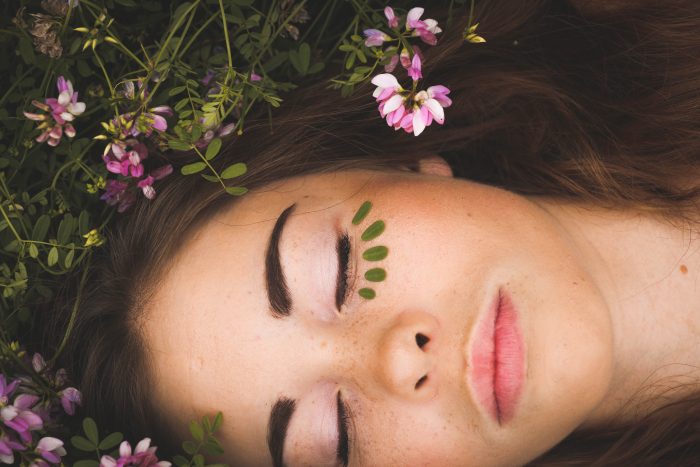From setting unrealistic standards to using unethical production and testing methods, the beauty industry has quite a lot of catching up to do in terms of restoring consumer trust, but that doesn’t mean that things aren’t getting better.
In fact, the past couple of years have actually set the beauty industry on an ascending path and, albeit slowly, practices and brand identities are evolving. Pushed forward by a series of cultural and social shifts like increased minority and female representation in politics, LGBTQ+ recognition and the rebirth of feminism, beauty is evolving and the change is seen across all its sectors, from production to marketing. For many years, the beauty industry has been an aggregator or superficial, unrealistic, discriminatory, unethical and elitist standards, but these empowering trends are giving us the tell-tell signs of a new era:
Good skincare is getting cheaper and cheap skincare is getting better
Remember what it felt like to build a skincare routine in 2010? The skincare market was actually made up of two extremes: expensive high-end products and basic cheap drugstore ones, with very few options in between. Now, consumers have a lot more choice. Fueled by the increased popularity of mid-priced French pharmacy brands and the groundbreaking influence of Deciem’s The Ordinary, the market is getting more affordable. Gone are the days when purchasing a $5 cleaner was a risky move. Now, for the same amount, you can buy a targeted product that would have cost 10 times that amount a few years ago. Even on a budget, you can still build an efficient beauty routine that’s free of perfumes and irritants and that includes more than the basic cleanser, toner and moisturizer.
Sustainable beauty is huge
Our planet is in danger and informed consumers expect their favorite brands to contribute to the environmental cause. Beauty brands should be no exception and we can already see that in the rise of green cosmetics. More and more companies are shifting towards sustainable practices: environmentally-friendly formulations derived from natural ingredients, recycled packaging, ingredients obtained through fair-trade practices, lack of animal testing. In addition to existing beauty brands changing their approach, there are also dozens of exciting sustainable beauty brands disrupting the market, and they are gaining a cult following faster than ever before, especially by partnering with respected celebrities.
The rise of real influencers and real beauty
For many years, Dove has been the only beauty brand advocating for real beauty, but they are no longer alone. Lately, more and more brands are trying to distance themselves from unrealistic beauty standards and celebrities have had a major say in this. After stars like Helen Mirren, Kate Winslet and Zendaya have complained about having their magazine cover photos airbrushed, many brands are now using non-retouched pictures of models. Missguided now works with models who have psoriasis, birthmarks, acne or albinism as part of their #InYourOwnSkin campaign, H&M is partnering with plus-size models and Nike has been promoting inclusivity on their social media accounts.
Consumers are calling out the big brands
Social media has changed human interaction in a lot of ways, sometimes not for the better, but one thing that it has achieved is to empower the customers by giving them a platform to make their voice heard. Because of social media, big beauty brands are no longer untouchable giants that can get away with anything. High-end skincare brand Sunday Riley has been under fire in October after anonymous employee reports of fake positive reviews, Beautyblender was heavily criticized for the limited shade range of their foundations and Proactiv have faced backlash for their misleading ads on their collaboration with Kendall Jenner. The fact that consumers are not afraid to call out brands for their questionable choices slowly pushes them in an ethical direction, otherwise they risk losing revenue.
Salons are promoting slow beauty and the mindful routine
Beauty brands are not only ones changing their standards and practices. Salons, which are a major part of the beauty industry, are shifting towards slow beauty, a movement that focuses on including mindfulness and wellness into beauty rituals. This trend has two implications for salons. On the one hand, owners invest more in salon insurance and décor, going for a SPA-like look and feel. On the other hand, customer care is redefined and taken to the highest level. An appointment to the hair or nail salon (and not necessarily a high-end one) is a pampering experience where clients can expect VIP treatment and a personalized approach.
Indie beauty brands are making an entrance
There is a lot of competition in the beauty industry, as more and more brands are battling to win the hearts of their customers, but there is still room for new players. Case in point: indie beauty brands. Without having the budget or influence of corporations, independent beauty brands have emerged as a breath of fresh air and much-awaited alternative for customers who are looking for something else. Because they are not part of some conglomerate owned by a corporation, indie brands stand out through transparency, sustainable practices and personalized customer service. Notable examples: Herbivore Botanicals, Mad Hippie, Sachajuan and Grown Alchemist.
Opening up to diversity
People who wear wakeup shouldn’t have to buy two bottles of foundation to obtain something that resembles their natural shade. Beauty brands should have understood this earlier, but now, it seems that things are finally evolving. New beauty brands such as Glossier, which have gained a massive following in record time, have stood out through extensive shade ranges that include everything from the palest to the darkest shades, with both cold and warm undertones. As a result, the big brands are trying to catch up and are expanding their shade range as well.







Read 0 comments and reply